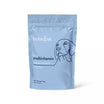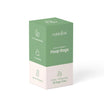Dogs have a lot to say, although they don't talk the way we do. Dog noises, such as barking, whining, growling, and howling, are all part of their built-in communication system. Whether they're excited, nervous, or just looking for a snack, every sound has meaning.
Some breeds are chattier than others, and certain noises can even hint at a dog's instincts. Hunting breeds, for example, are known for deep, purposeful barks, while smaller pups might rely on high-pitched whimpers.
So, what is your dog trying to tell you? Keep reading to decode the sounds and understand your pup like never before!
Why Do Dogs Make Noises?

Dog noises aren't just background sounds—they serve a purpose. A bark can be a greeting, a warning, or a demand for attention. Dogs whimper when they want comfort, and a deep growl signals they're feeling defensive. Even a dramatic sigh can mean they're settling in after a long day.
Some breeds are naturally more vocal, especially hunting breeds that use howling to signal their location. Others rely on subtle sounds like panting or grumbling. Paying attention to these different sounds helps you understand what your pup is saying.
The Role of Communication in Dog Behavior
Barking, whining, and howling are ways dogs communicate through sound as much as body language. A wagging tail might signal happiness, but a dog's growl could mean uncertainty. A short, high-pitched bark often means excitement, while a deep, slow bark acts as a warning.
Some dogs make noise just to interact, while others use sound to establish their place in the pack. Whether they're greeting you at the door or asking for food, their vocalizations play a huge role in daily life.
Dog Vocalizations: Emotional and Physical States
A dog's vocal language reflects both mood and physical state. Whining can signal fear, a request for attention, or even anticipation of a treat. A deep growl may indicate discomfort, while rhythmic howling often means they're responding to other dogs or loud noises.
Dogs whimper when they're uneasy, but they also sigh when they're relaxed. Even panting can signal excitement or exhaustion. Learning to recognize these different dog sounds helps you understand what's going on inside your pup's head.
What Are the Most Common Dog Noises?
Dogs have a way of making themselves heard, and each noise carries a message. From sharp barks to soft whimpers, their sounds tell a story about how they feel and what they need. Some dog breeds are more vocal than others, but all dogs communicate through different sounds.
The most common dog noises fall into a few key categories: attention-seeking, defensive, emotional, and instinctive. Understanding these can help you recognize when your pup is excited, alert, or in need of comfort. Let's break down each type of sound and what it means.
Communication and Attention-Seeking Sounds
Some dog sounds are all about getting attention or interacting with people and other dogs. These noises can signal excitement, need, or even mild distress.
- Barking. The ultimate dog's language tool, barking, can mean many things. Short, rapid barks may signal excitement or curiosity, while deep, slow barks often serve as a warning. Some breeds are natural barkers, while others use it more sparingly.
- Whining. This high-pitched sound usually means a dog is making a request or is feeling restless. Dogs whine when they want food, a toy, or attention, but it can also be a sign of discomfort. If paired with pacing, they might need to go for a walk or see the vet.
- Whimpering. Softer than whining, whimpering signals unease or mild distress. A pup might whimper when left alone due to separation anxiety or when they're uncertain about something new. It's a go-to sound for puppies who want comfort from their human.
Aggressive or Defensive Sounds
Not all dog noises are friendly—some serve as warnings or self-defense. These sounds let others know when a dog is feeling threatened, uncomfortable, or protective.
- Growling. A clear signal that a dog wants space. A dog's growls can be a warning, showing they feel cornered or defensive. But not all growls mean aggression—some dogs growl playfully during excited roughhousing. Playful growls sound higher and come with loose, happy body language, while aggressive growls are deeper with tense posture and hard stares.
- Snarling. A step beyond growling, snarling includes bared teeth and a tense body. This noise usually signals serious discomfort or a response to a threat. A dog makes this sound when protecting their territory or when feeling truly cornered.
- Yelping. A quick, sharp noise, often a reaction to sudden pain or surprise. A dog barks in a yelp when stepped on or startled, but repeated yelping might mean they're injured or scared.
Distress or Emotional Expression Sounds
Some dog sounds reveal how they're feeling emotionally. Whether they're lonely, frustrated, or just unwinding, these vocalizations give insight into their mood.
- Howling. Dogs may howl in response to sirens, music, or other dogs. This singing instinct comes from their wolf ancestors and is often a sign of communication or loneliness.
- Moaning. A low, drawn-out sound that can mean different things depending on context. A pup might moan when stretching in comfort, but it can also signal mild frustration or physical discomfort.
- Sighing. Just like humans, dogs sigh when they're relaxed after a long day. It's often a sign of contentment, but paired with whining, it can indicate slight disappointment or impatience.
Physical or Instinctive Sounds
Some dog noises are purely instinctive, linked to physical needs or natural reactions. These aren't about communication but rather a response to internal or external factors.
- Panting. The most common way dogs regulate their body temperature. Fast panting can mean they're overheated, but slow panting often happens when a dog makes an excited noise during play or anticipation.
- Chattering. A strange, rapid teeth-clacking sound. It can happen when a dog is cold, but also when they're overly excited or stimulated by certain smells, especially in hunting breeds.
Can Dog Noises Be a Sign of Health Issues or Other Problems?
Not all dog noises are just part of normal communication—sometimes, they can signal something's off. A sudden change in dog sounds, like excessive whining, howling, or a raspy bark, might mean a trip to the vet is in order. Dogs that usually stay quiet but start barking nonstop or making high-pitched whimpers could be trying to say they're uncomfortable.
Some breeds are naturally vocal, but if a pup starts making different sounds than usual, like deep coughing or strained panting, you should pay attention. If they seem restless, avoid food, or act differently alongside new noises, something more serious could be going on.
When to Be Concerned About Dog Noises
A change in a dog's vocalizations can be a red flag, especially if paired with unusual behavior. If a dog makes constant whimpering sounds without a clear reason, it could mean discomfort. Harsh, raspy barking or wheezing after play might hint at a throat issue.
Watch for panting that seems excessive, especially when they haven't been running or in the heat. A sudden refusal to eat, yelp when touched, or strange growl might mean it's time for a vet check. If their usual happy howling turns into weak, struggling sounds, don't ignore it.
When Not to Be Concerned About Dog Noises
Some dog sounds might seem odd, but they are completely normal. Dogs communicate in ways that don't always make sense to us, like sighing after a long day or softly whining before a meal. Hunting breeds often let out excited yips, and certain hounds love to howl just for fun.
Even sudden bursts of barking at the door or random chattering from excitement aren't anything to worry about. A pup making playful growls while tugging on a toy isn't being aggressive—it's just part of their play. As long as they're acting like themselves, their sounds are just part of their unique personality!
How To Address Concerning Noises
When a dog makes unusual noises, figuring out the cause is the first step. Some sounds signal physical discomfort, while others come from fear, excitement, or a need for attention. Identifying the reason helps in choosing the best solution.
- Addressing Medical Concerns and Physical Discomfort. If your pup has a raspy bark, excessive panting, or frequent whining, a vet visit may be necessary. Sudden changes in dog noises could mean something physical is going on, so checking for signs like loss of appetite or avoiding movement is important.
- Calming Stress, Fear, and Aggression. Loud noises, new environments, or separation anxiety can trigger anxious behaviors. A cozy bed, familiar scents, and calming chews with chamomile and L-tryptophan may help relax their nerves.
- Providing Necessities and Enough Attention. Some dogs whimper or bark because they need food, water, or just some love. A good walk, mental stimulation with a toy, and rewarding positive behavior can keep them content.
Can CBD Help Reduce Concerning Noises?

Yes, CBD may help calm dogs that frequently whine, howl, or make anxious noises. It works by supporting their natural systems, helping to relax overactive nerves and ease fear or discomfort. Whether it's from stress, physical unease, or aggression, adding CBD to their routine may provide extra support.
- CBD Calming Chews for Dogs. Formulated with CBD, chamomile, and L-tryptophan, these treats help dogs stay calm during thunderstorms, fireworks, or stressful car rides. Perfect for pups that get startled easily or struggle with separation anxiety.
- CBD Wellness Dog Treats. These daily treats provide a balance of CBD, hemp seed powder, and antioxidants. The blueberry and sweet potato formula supports overall wellness while keeping your dog's nervous system in check.
- CBD Capsules for Dogs. A simple, no-fuss way to support your dog's well-being. These can be hidden in treats or mixed into food to provide consistent, calming effects throughout the day.
Final Thoughts on Noises That Dogs Make
Dogs have their own way of communicating, and their noises tell a story. Whether they're barking, whimpering, or letting out a dramatic sigh, each sound has meaning. Learning to recognize these vocal cues helps strengthen the bond between you and your pup.
While some dog sounds are completely normal, others may signal discomfort or unease. Paying attention to changes in their barking or whining can help you respond appropriately. For extra support, HolistaPet offers wellness products designed to keep dogs feeling their best—because a happy dog makes for a happy home!







![Probiotics For Dogs [Soft Chews] - HolistaPet](http://www.holistapet.com/cdn/shop/files/Probiotic-Infographic-1_472d7a29-e30c-435a-9638-1365d8c3a9f9.jpg?v=1725384841&width=104)
















 Broad Spectrum CBD Oil for Dogs - Fast Acting
Broad Spectrum CBD Oil for Dogs - Fast Acting
 Chicken Flavored CBD Oil For Dogs - Easy Dose
Chicken Flavored CBD Oil For Dogs - Easy Dose
 Salmon Flavored CBD Oil For Dogs - Highly Rated
Salmon Flavored CBD Oil For Dogs - Highly Rated
 CBD Dog Treats for Anxiety - Loved by Thousands
CBD Dog Treats for Anxiety - Loved by Thousands





Leave a comment
All comments are moderated before being published.
This site is protected by hCaptcha and the hCaptcha Privacy Policy and Terms of Service apply.